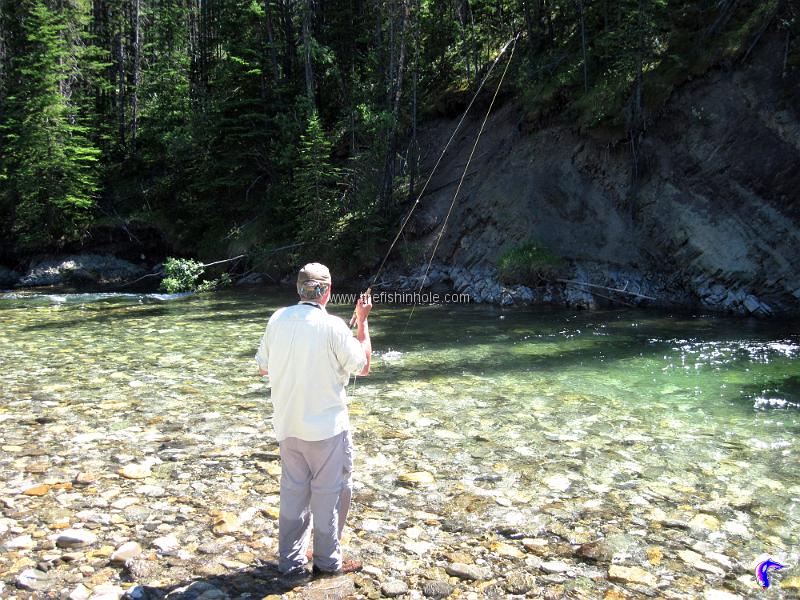Using a dry fly as an indicator for nymphs
One of the most effective, yet often overlooked, fly fishing methods for trout is what is commonly called the hopper-dropper rig. I prefer to call it a dry-dropper rig, but that doesn’t have the same ring to it. This method simply involves hanging a nymph beneath a dry fly that is acting as a strike indicator. Sometimes they hit the dry and sometimes the nymph. The most common dry fly used in this set-up is a grasshopper pattern but in reality any dry fly can be used as the indicator fly. The only requirement is that the fly must be able to support the nymph that is being fished below. With the incorporation of foam into many of today’s patterns it’s quite easy to get a selection of different dries that will work as an indicator. I have used caddis, large mayflies such as green drakes, and stoneflies. A piece of tippet tied to the bend of the dry fly with a simple clinch knot is attached to the nymph and cast up stream. Fish the rig as if you are dry fly fishing keeping an eye for any unusual movements and if the dry slows down, moves sideways or heads upstream etc. set the hook as something is messing with your fly.

Fish the rig as if you are dry fly fishing keeping an eye for any unusual movements
I usually fish between 18”-30” inches of tippet, depending on the water conditions. The tippet I prefer to use between the dry and the dropper is fluorocarbon as it is not only invisible but also tends to sink a bit better than monofilament. Try using a shorter, heavier leader than you would under typical dry fly conditions as the heavier, bushier dries tend to twist leaders. I usually fish 7.5 foot, 2X leaders and 4X or 5X tippet, depending on the size of nymph i’m using. If your fly isn’t sitting upright when it hits the water you will want to adjust its position by giving it a little pull. That will usually get the fly riding properly and the commotion created by the tug is not uncommon with the struggling that goes on when a real hopper hits the water. This method is extremely effective as the large dry fly attracts the trout and as he moves in on it he suddenly realizes he has a choice and makes it quickly attacking one or the other. On many occasions they will actually attempt to take them both. Either way it makes for great fishing action!
